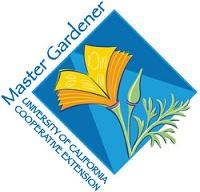
University of California
UC Master Gardener Program of Sonoma County
Teucrium (Germander)
A member of the mint family (Lamiaceae, that also includes Lavandula and Salvia), Teucrium is a fairly large genus of evergreen or deciduous perennials, shrubs, and subshrubs that includes species ranging from low tufts to the nearly 8-ft. tall bush germander.
Numerous attributes
Teucrium is native to the Mediterranean area and well-suited to Sonoma County gardens.
- All species are fairly drought tolerant and thrive in heat, poor or rocky soils, and other difficult situations.
- In rich garden loam, they may become lush and somewhat rangy.
- All take full sun to part shade, are best planted in well-drained soil, and are deer-resistant.
- They can be left to develop a casual, natural shape or be sheared into formal topiaries or hedges.
Commonly Planted Species
Although there are more than 300 Teucrium species, only a few are grown in gardens.
- Teucrium fruticans, bush germander, grows 6-8 ft. tall and wide, has small gray-green leaves with a silvery cast on a dense, twiggy shrub of downy-white stems. It blooms from January to July or longer with tiny lavender-blue flowers at branch tips often buzzing with bees.
- Annual pruning is needed to ensure an attractive, tighter shape and prevent it from becoming too unkempt.
- Evergreen, bush germander is extremely durable even when subjected to wind and salt spray. It tolerates drought but is best looking with occasional irrigation.
- A dwarf form, ‘Azureum,’ grows to 4-5 ft. but can be kept lower with pruning. ‘Compactum’ is even lower-growing.
- Teucrium chamaedrys (syn. x lucidrys), wall germander, is a shorter, deeper green, mounding form 1-2 ft. tall and wide with spikes of pinkish purple flowers that rise above the foliage. Its leaves resemble soft miniature oak leaves—“chamaedrys” meaning "ground oak" refers to the leaf shape and ground cover habit.
- Thin, individual stems rise directly from the ground and slowly broaden the clump as it spreads by underground rhizomes.
- This low germander looks most attractive when it forms a tight mound in full sun. In excessive shade, stems tend to fall over and expose an open center.
- Periodic shearing helps maintain density but may sacrifice blooms. It can be pruned to a low hedge and is often used in classic intertwined knot gardens with Santolina.
- Teucrium chamaedrys ‘Nanum’ (syn. ‘Prostratum’), creeping germander, is a true groundcover species, slowly spreading to 3 ft. or wider as it grows 6-8 in. high.
- Small, pinkish purple blossoms in spring and summer attract bees.
- This long-lived perennial can be mowed or sheared to keep it even lower. Shearing prevents flowering but produces a walk-on carpet.
- Teucrium cossonii majoricum ( T. majoricum), called fruity germander for its foliage scent when crushed, is also low-growing as it forms a loose tussock about 6 in. high spreading 1-3 ft. wide with small grayish green leaves on wiry stems.
- It may be used in masses as a non-invasive, slowly spreading, soft groundcover for sunny sites where it attracts bees.
- Lavender-pink flowers cover the surface from spring into summer. After they fade to a rusty brown, flowers can be sheared for a re-bloom and mounds reduced by half to control shape. Only occasional irrigation is needed.
- Teucrium scorodonia 'Crispum' is another groundcover, but one to avoid. Attractive soft green leaves with ruffled margins are luring, but underground stems spread rampantly to the point of invasiveness and are extremely difficult to eradicate.
September 2023







